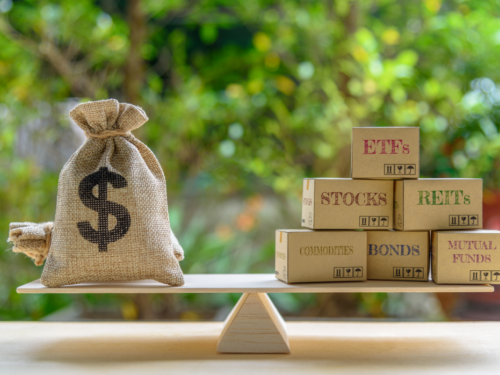
Hopefulness around a COVID-19 vaccine, expectations of additional stimulus, and better-than-expected quarterly corporate earnings in the U.S. bolstered investor sentiment and risk assets in July. Positive vaccine announcements were dominant in investors’ psyche despite a record spike in infection rates in many parts of the country and poor macroeconomic data.
The S&P 500 Index was up for the fourth straight month, increasing 5.5% in July. By month’s end, the index was into positive territory with a 1.2% year-to-date return[1]. At the same time, gold increased 9.5% during the month, pushing year-to-date returns to 29.2%[2].
Gold became an investment across most of our portfolios about a year ago based upon what, at the time, was a high level of uncertainty within the U.S. and global economies. However, last year’s China/U.S. trade war was a walk in the park versus today’s unknowns. Gold has typically been a good hedge against uncertainty and accordingly it has performed well during 2020.

Warren Buffett, a longtime critic of gold as an investment, has said that the “magical metal” is no match for “American mettle.” Recently, he might have changed his tune by buying 21 million shares of Barrick Gold, a gold miner, while also selling shares of financial firms such as Goldman Sachs, Wells Fargo and J.P. Morgan Chase[3].
The bond market seems to be concerned over the economy as global rates moved lower. In the U.S., yields on 10-year Treasury bond fell 0.11% to 0.528% on July 31. Excluding just one single day this past spring, March 9, this is an all-time record low[4]. When factoring in inflation, U.S. real interest rates moved further into negative territory. With the help of central bank intervention and tighter credit spreads, companies issued debt hand over fist to avoid potential lower availability in the future[5].
The DXY Index, which represents a trade-weighted index for the U.S. dollar and an implicit view of the U.S. in the foreign exchange markets, fell over 4%, its worst monthly performance since 2010[6]. The combination of dollar weakness and risk-on investor sentiment helped non-U.S. equities. In July, the MSCI Emerging Markets Index gained 8.9%, while developed market stocks, excluding the U.S., as measured by the MSCI EAFE Index, rose 2.3%[7].
While gold’s recent rally partially reflects weakness in the U.S. dollar and the asset’s negative correlation to real rates, U.S. money growth (the so-called M2) has never been faster than it is today. It is two-thirds faster than during the inflationary 1970s and more than two times the growth since 2008[8]. While inflation expectations remain muted, the greater than $4 trillion of fiscal stimulus estimated to be injected in the U.S. economy would suggest that a pick-up in inflation seems quite possible, if not probable.
Going forward, it is our view that the only certainty is that uncertainty will continue. We need to muster our own METTLE to meet these challenges: stretched market valuations, any COVID intensification, grueling elections, China/ U.S. strains and U.S. social tensions. While the recent performance of risk assets has been encouraging, we continue maintain our discipline and dedicated appropriate allocations to gold, Treasuries and cash. We are also attempting to be opportunistic, adding to international and emerging markets equities that may benefit from a continuing weakening of the U.S. dollar.
[1] Yahoo Finance as of July 31, 2020
[2] Yahoo Finance as of July 31, 2020
[3] https://www.marketwatch.com/story/did-warren-buffett-just-bet-against-the-us-economy-his-latest-investment-raises-some-questions-2020-08-16
[4] Yahoo Finance as of July 31, 2020
[5] https://www.marketwatch.com/story/corporate-borrowing-in-2020-to-smash-prior-records-goldman-says-11598044749
[6] NEPC Monthly report
[8] https://www.advisorperspectives.com/commentaries/2020/08/14/charts-for-the-beach


